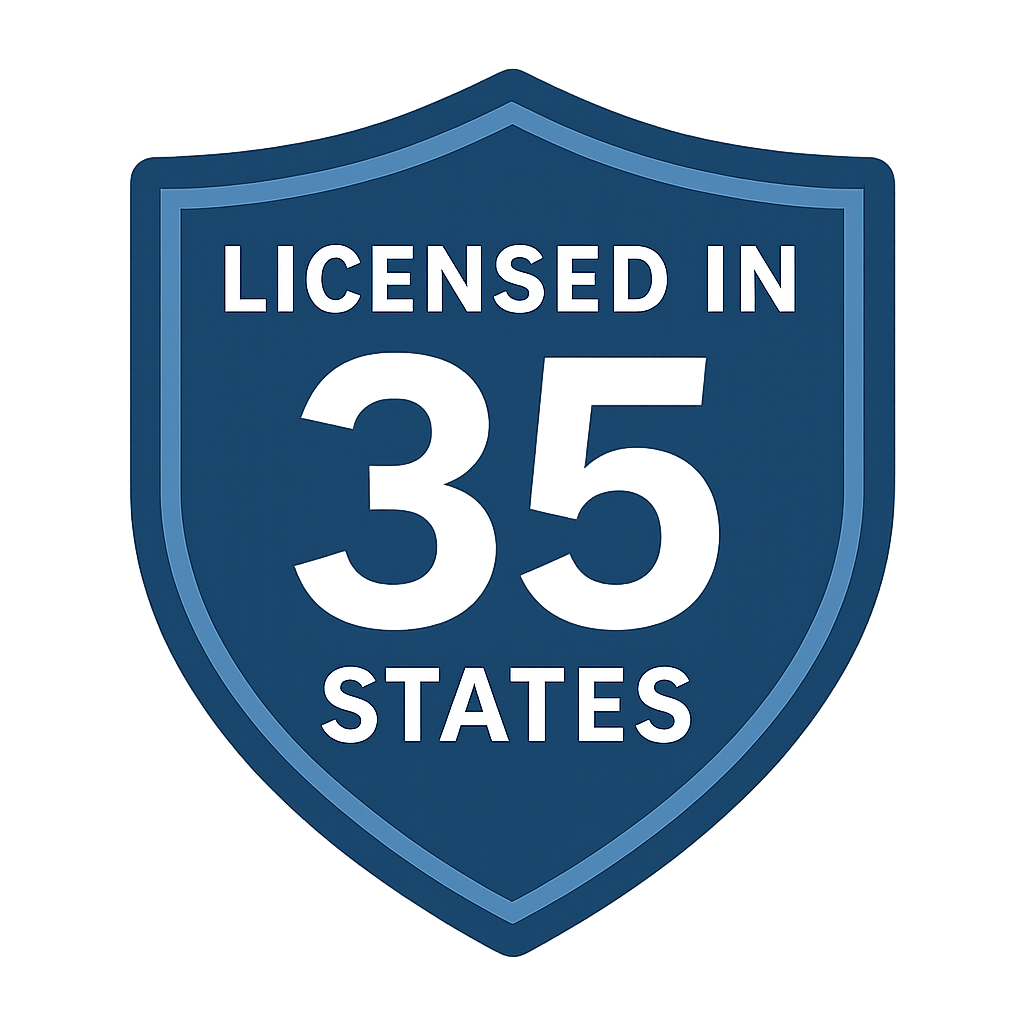How Does Car Insurance Work?
Understand Your Coverage for Confidence on the Road
On this page
Overview of How Car Insurance Works
Core Coverage Types
Car insurance protects against financial loss from accidents, theft, or damage, with types like liability, collision, and comprehensive. Liability covers damages you cause, while others protect your vehicle. A Plus Insurance helps you choose policies tailored to your needs.
Premiums and Payments
Premiums are monthly or annual payments based on risk factors like driving record and location. Discounts reduce costs for safe drivers or bundling. Policies renew every 6–12 months, requiring consistent payments to avoid lapses.
Claims Process
In accidents, file a claim with your insurer, providing details like police reports. They assess damage, determine fault, and issue payouts based on coverage. A Plus Insurance guides you through claims for quick resolution.
Frequently Asked Questions
What is car insurance?
Car insurance is a contract where insurers cover financial losses from accidents, theft, or damage. You pay premiums for protection against liability or vehicle repairs. It's legally required in most states to ensure financial responsibility.
What does liability coverage do?
Liability covers damages or injuries you cause to others in an accident, like medical bills or repairs. It's mandatory in states like Georgia with minimums like 25/50/25. It doesn't cover your own vehicle or injuries.
What is collision coverage?
Collision coverage pays for repairs to your vehicle after an accident, regardless of fault. It includes deductibles, typically $500–$1,000. This is key for financed cars to avoid out-of-pocket costs.
What does comprehensive coverage include?
Comprehensive covers non-collision damage like theft, vandalism, or weather events. It pays actual cash value minus deductible. It's vital in areas prone to storms or theft, like Georgia.
How are car insurance premiums calculated?
Premiums are based on driving record, age, vehicle type, location, and credit score. Urban areas increase rates due to higher risks. Insurers like Progressive offer discounts to lower costs.
What factors raise insurance premiums?
Accidents, tickets, young age, or poor credit can increase rates by 50 percent or more. High-risk vehicles or urban locations also drive up costs. Maintaining a clean record keeps premiums affordable.
How can I lower my car insurance costs?
Bundle policies, take defensive driving courses, or maintain good credit for discounts up to 25 percent. Compare quotes from multiple providers regularly. Safe driving habits prevent surcharges and save money.
What are common car insurance discounts?
Safe driver discounts save 10–20 percent for violation-free records. Multi-policy or multi-car discounts reduce costs significantly. Check discount options for savings opportunities.
Does credit score affect car insurance rates?
In most states, poor credit can raise premiums by up to 50 percent. Good credit signals lower risk to insurers. Pay bills on time to improve scores and reduce costs.
How do I file a car insurance claim?
Contact your insurer within 24 hours, providing police reports, photos, and witness details. They assess fault and damage for payouts. Timely filing speeds up resolution and coverage.
What happens if I'm at fault in an accident?
Your liability coverage pays for the other party's damages up to policy limits. You may face premium increases or personal costs if limits are exceeded. Higher limits like 100/300/100 reduce risks.
What if the other driver is at fault?
Their liability insurance covers your damages, or your uninsured motorist coverage applies if they're uninsured. File with their insurer or yours for repairs. Fault determination affects claim outcomes significantly.
Does car insurance cover rental cars?
Full coverage often extends to rentals for collision and comprehensive, but liability may vary. Rental agencies offer waivers for extra protection. Check policy details before renting.
What is uninsured motorist coverage?
It protects you if hit by an uninsured or underinsured driver, covering your injuries and damages. It's optional in most states but critical with high uninsured rates. Adds under $150 annually for peace of mind.
What is full coverage car insurance?
Full coverage combines liability, collision, and comprehensive, protecting your vehicle and others. It's required for financed cars and costs $1,000–$2,000 yearly. Ideal for high-value vehicles or high-risk areas.
What is roadside assistance coverage?
Roadside assistance covers towing, flat tires, or lockouts, often included in full policies. It costs $10–$20 monthly as an add-on. Useful for long trips or unreliable vehicles.
What is gap insurance?
Gap insurance covers the difference between a totaled car's value and your loan balance. It's crucial for new or financed vehicles. Learn more via resources for financing needs.
Does car insurance cover theft?
Comprehensive coverage includes theft and vandalism, paying actual cash value minus deductible. Liability-only policies exclude this protection. Urban drivers benefit from adding comprehensive coverage.
Why is car insurance mandatory?
Most states require insurance to cover damages you cause, reducing public financial burdens. Penalties include fines up to $1,000 and license suspension. It ensures safer roads and accountability.
How do state requirements differ?
Minimums vary, like Georgia's 25/50/25 or Florida's 10/20/10. Some states require no-fault or PIP coverage. Check state laws for compliance during travel.
What happens if I drive without insurance?
Fines range from $100 to $1,000, plus license or vehicle suspension in most states. You may need SR-22 filings, increasing future rates. Continuous coverage prevents legal and financial risks.
How often should I review my car insurance?
Review annually or after life changes like moving or accidents. Market shifts can save 20 percent with new providers. Use tools for quick comparisons.
Can I switch insurance providers?
Yes, switch anytime without lapses by aligning policy start dates. Compare rates for savings up to 30 percent. New providers often offer better deals for similar coverage.
Why work with an insurance agent?
Agents offer personalized advice, uncover discounts, and simplify claims. They understand local risks better than online tools. Build trust for tailored, cost-effective policies.
Comparison of Car Insurance Coverage Types
Compare key coverage types to understand their role in car insurance as of 2025.
| Coverage Type | What It Covers | Average Cost (Annual) | Best For |
|---|---|---|---|
| Liability | Damages to others you cause | $500–$1,000 | Budget drivers, minimum compliance |
| Collision | Your vehicle repairs after accidents | $300–$700 | Financed cars, frequent drivers |
| Comprehensive | Theft, vandalism, weather damage | $200–$500 | High-value cars, urban areas |
Service Area
How Does Car Insurance Work?
Understanding how car insurance works is key to navigating financial protection on the road. Car insurance is a contract where you pay premiums for coverage against accidents, theft, or damage, with types like liability, collision, and comprehensive. A Plus Insurance simplifies the process, offering tailored plans nationwide.
Liability coverage, mandatory in most states like Georgia, pays for damages you cause, with minimums like 25/50/25 covering bodily injury and property. Collision repairs your vehicle post-accident, while comprehensive handles theft or weather damage, critical in high-risk areas. Premiums, averaging $1,000–$2,000 yearly, depend on driving history, location, and vehicle type, with discounts for bundling or safe driving.
Claims involve reporting incidents to insurers, who assess fault and damage for payouts. Delays or lapses can lead to fines up to $1,000 or denied claims, so maintain continuous coverage. Add-ons like roadside assistance or gap insurance enhance protection, especially for financed cars. Explore resources for detailed insights on coverage options.
From urban Atlanta to rural Montana, car insurance varies by state laws and risks. Annual reviews catch savings, with market shifts offering 20 percent reductions. Community events highlight the need for reliable coverage. A Plus Insurance connects you with providers like Progressive for affordable, compliant policies.
In summary, knowing how car insurance works empowers informed choices for legal and financial security. From understanding premiums to filing claims, preparation is key. Contact A Plus Insurance for personalized quotes that fit your driving lifestyle.
Last Updated on by Shawn Christie




